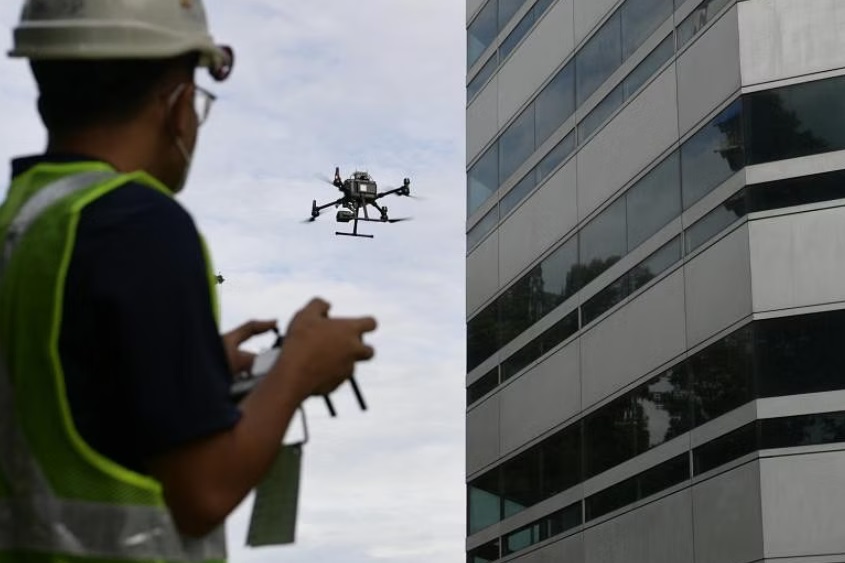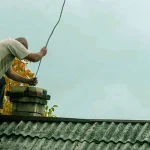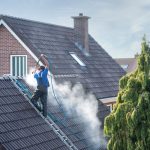Safeguarding the Skyline The Essential Guide to Building Facade Inspection in Singapore
The towering skyline of our city tells a story of ambition, ingenuity, and resilience. Yet, beneath its grandeur lies a critical responsibility—ensuring structural integrity. Building facade inspection Singapore plays a vital role in maintaining the safety, aesthetics, and longevity of these urban giants, ensuring they remain as steadfast as the ambitions that birthed them.
Why Building Facade Inspections Matter
A building’s facade is more than a surface; it is the first line of defence against the elements. In a tropical climate like Singapore’s—marked by heavy rains, intense sunlight, and high humidity—facades endure constant wear and tear. Left unchecked, this can lead to serious issues such as:
- Structural damage: Cracks, spalling, or corrosion can compromise safety.
- Falling debris hazards: Loose tiles or concrete can pose risks to pedestrians.
- Energy inefficiency: Poorly maintained facades can lead to increased energy consumption due to inadequate insulation.
Singapore’s Building and Construction Authority (BCA) enforces mandatory facade inspections for buildings over 20 years old and taller than 13 metres. This regulation, introduced in 2022, ensures that ageing structures are regularly assessed and maintained, safeguarding public safety and preserving property value.
The Facade Inspection Process
Facade inspections are thorough, involving multiple steps to evaluate structural soundness and identify potential risks. The process typically includes:
- Visual Inspection: Trained professionals examine the exterior for visible signs of wear, such as cracks, discolouration, or water stains.
- Non-Destructive Testing (NDT): Advanced tools like thermal imaging or ultrasonic testing detect hidden issues without damaging the structure.
- Material Sampling: In some cases, samples of concrete or tiles are taken for laboratory analysis to assess durability and quality.
- Detailed Reporting: Findings are compiled into a report, highlighting risks, recommended repairs, and timelines for action.
Key Benefits of Regular Facade Inspections
Investing in regular building facade inspections offers benefits that extend beyond compliance:
- Enhanced Safety: Regular checks prevent incidents such as falling debris or facade failures.
- Prolonged Lifespan: Timely maintenance ensures the building remains structurally sound for decades.
- Cost Savings: Early detection of issues prevents expensive, large-scale repairs down the line.
- Aesthetic Preservation: Clean, well-maintained facades enhance a building’s visual appeal, positively impacting its value.
Singapore Statistics on Building Safety
Singapore has over 5,500 buildings that fall within the BCA’s criteria for mandatory facade inspections. In 2022, the BCA reported approximately 20 incidents of falling facade materials, underscoring the importance of proactive measures. These figures are a stark reminder of the need for vigilance in maintaining our built environment.
What to Look for in a Facade Inspection Provider
Choosing the right professional for your building facade inspection is critical. Here are key considerations:
- Accreditation: Ensure the provider is certified by relevant authorities such as the BCA.
- Experience: Look for companies with a proven track record in facade inspections and maintenance.
- Technology Use: Providers employing cutting-edge tools like drones and NDT techniques can offer more comprehensive insights.
- Transparent Reporting: Choose a company that provides clear, detailed reports with actionable recommendations.
Common Facade Issues Identified in Inspections
Building facade inspections in Singapore frequently uncover a range of issues:
- Cracks and Spalling: Often caused by weather exposure, these can compromise structural integrity.
- Water Infiltration: Leaks can lead to interior damage and mould growth.
- Material Degradation: Age and environmental factors can cause corrosion or fading of materials like concrete, metal, and paint.
- Loose Fixtures: Misaligned or deteriorated cladding, panels, or tiles increase the risk of falling debris.
The Cost of Facade Inspections
While costs vary depending on the size and complexity of the building, facade inspections typically range between S$3,000 and S$10,000. Although this may seem significant, the cost of neglect—ranging from safety hazards to expensive emergency repairs—far outweighs the investment in regular inspections.
Environmental Considerations
Facade inspections also support Singapore’s sustainability goals. By identifying and addressing energy inefficiencies, such as poor insulation or outdated materials, inspections contribute to reduced energy consumption and lower carbon footprints. Choosing eco-friendly materials during repairs further aligns with the nation’s Green Building Masterplan.
Tips for Building Owners and Managers
To maximise the benefits of facade inspections:
- Schedule Regularly: Stick to the BCA’s recommended intervals to ensure compliance and proactive maintenance.
- Act Promptly: Address identified issues quickly to prevent escalation.
- Keep Records: Maintain detailed records of inspections, repairs, and upgrades for future reference.
- Engage Professionals: Partner with accredited service providers for reliable results.
Preserving the Face of Singapore
The facades of our buildings are more than architectural features; they reflect the soul of the city. Regular facade inspections are not merely a regulatory requirement—they are a testament to our commitment to safety, sustainability, and pride in our built heritage.
By investing in proactive maintenance, we ensure that Singapore’s skyline continues to inspire awe while prioritising the safety of those who live and work within it. When it’s time to protect your property, look no further than a professional building inspection service—because safety, longevity, and value should never be left to chance.















